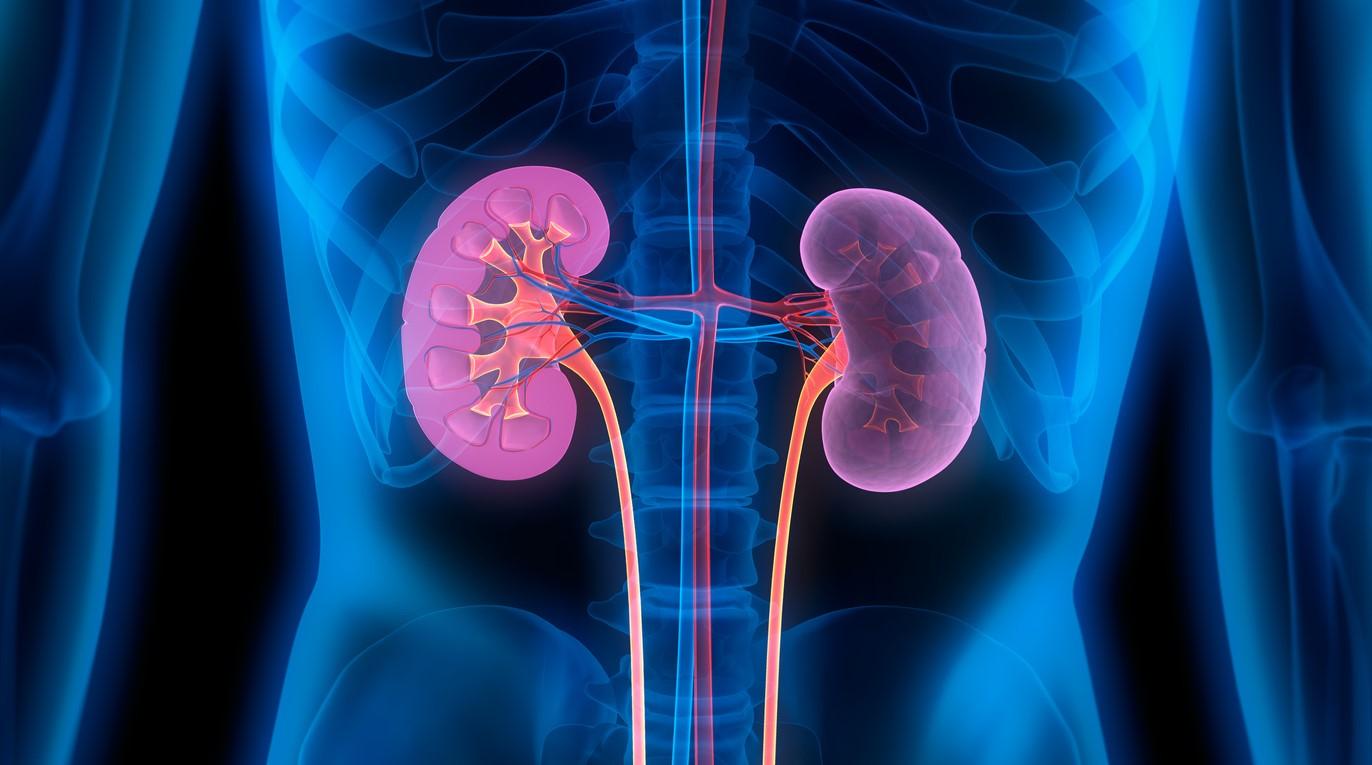The antiviral letermovir has similar efficacy to valganciclovir in preventing cytomegalovirus (CMV) disease in recipients of kidneys from CMV-positive donors, with less propensity to cause low counts of infection-fighting white blood cells, finds a phase 3 randomized, controlled noninferiority trial published yesterday in JAMA.
CMV is a common virus that infects people of all ages and spreads through body fluids. It usually remains dormant, causing no symptoms or a mild illness characterized by fever, sore throat, fatigue, or swollen glands. But in people with impaired immune systems, such as transplant recipients, CMV can produce serious symptoms affecting the eyes, lungs, esophagus, intestines, stomach, or liver.
Oral valganciclovir, given for 200 days after transplant, is standard care to prevent such complications in high-risk kidney transplants from CMV-positive donors to CMV-negative recipients (about 20% of all kidney recipients), but it causes immune suppression.
Valganciclovir can also lead to treatment stoppage, immunosuppressant dose reductions, and/or use of other drugs to stimulate the bone marrow to generate more neutrophil white blood cells. It also requires dose adjustments because of fluctuating kidney function after transplant and can lead to valganciclovir resistance.
Letermovir doesn't require dose adjustment and isn't tied to cross-resistance with other anti-CMV therapies. But, unlike valganciclovir, letermovir has potential drug interactions and doesn't act against herpes simplex virus or varicella zoster virus.
First approved by the US Food and Drug Administration (FDA) for preventing CMV illness in CMV-positive stem-cell transplant recipients in 2017, Merck's letermovir (trade name, Prevymis) was approved for use in kidney transplant recipients yesterday.
Fewer adverse events with letermovir
An international team led by University of Washington researchers in Seattle compared antiviral effectiveness among 586 adult kidney transplant recipients randomly assigned to receive either letermovir (480 milligrams [mg]) or valganciclovir (900 mg) for up to 200 days at 94 sites in 16 countries from May 2018 to April 2021, with follow-up until April 2022.
Average participant age was 49.6 years, 84.2% were White, 71.6% were men, 59.6% received a deceased-donor kidney, and 46.2% received drugs to suppress their immune system and prevent organ rejection. The most frequent indications for kidney transplant were congenital cystic kidney disease (17.3%) and high blood pressure (16.1%).
Letermovir (289 participants) was noninferior to valganciclovir (297) in preventing CMV illness through 1 year after transplant (10.4% vs 11.8%; stratum-adjusted difference, −1.4%) and had lower rates of leukopenia or neutropenia (low white blood-cell counts). Zero letermovir recipients developed confirmed CMV illness through 28 weeks, compared with five (1.7%) in the valganciclovir group.
Quantifiable CMV DNA was found in 2.1% of letermovir recipients, compared with 8.8% of valganciclovir recipients by 28 weeks. Of all participants assessed for CMV disease or DNA, 0 of 52 letermovir recipients and 8 of 66 (12.1%) who received valganciclovir had resistance-linked substitutions.
The leukopenia or neutropenia rate by 28 weeks was lower in the letermovir than the valganciclovir group (26% vs 64%; difference, -37.9%). Fewer letermovir than valganciclovir recipients stopped taking their assigned antiviral because of adverse events (4.1% vs 13.5%) or drug-related adverse events (2.7% vs 8.8%).
Three valganciclovir recipients experienced uncontrolled viral proliferation, and two developed CMV disease after early discontinuation of prophylaxis. Serious adverse-event rates were comparable in the two groups, including serious heart dysfunction (2.7% in the letermovir group vs 3.0% in the valganciclovir group). Fewer drug-related and serious drug-related adverse events were reported with letermovir than valganciclovir.
Organ loss occurred in 2 letermovir participants (0.7%) and 6 (2.0%) who received valganciclovir through 52 weeks. Twenty-three participants (8.0%) in the letermovir group and 20 valganciclovir recipients (6.7%) experienced biopsy-proven organ rejection. Six participants died, three during the prophylaxis period, through 1 year. No deaths were considered related to the antivirals or CMV illness.
Letermovir is dosed independent of kidney function, and the dose and frequency are identical for oral and intravenous administration.
The study authors called for future studies on whether letermovir or valganciclovir confers a lower risk of opportunistic infection or organ rejection.
"Other considerations with valganciclovir include close monitoring of kidney function for dose adjustments and the need to convert to ganciclovir, with weight-based dosing, for intravenous administration," they wrote. "In contrast, letermovir is dosed independent of kidney function, and the dose and frequency are identical for oral and intravenous administration."
Letermovir 20 times more expensive
In a related commentary, Zoe Raglow, MD, and Daniel Kaul, MD, both of the University of Michigan at Ann Arbor, called the study results "practice changing," although they noted that letermovir, at about $250 a day, is more than 20 times more expensive than generic valganciclovir, making it one of the most expensive routine post-transplant drugs.
Letermovir may be most cost-effective when used among patients with baseline leukopenia or who develop leukopenia during valganciclovir treatment.
"Therefore, letermovir may be most cost-effective when used among patients with baseline leukopenia or who develop leukopenia during valganciclovir treatment," they wrote. "Furthermore, data are needed in other solid organ transplant populations, including in patients at highest risk for CMV disease and resistance (eg, lung and small bowel transplant recipients) and in intermediate-risk groups (including CMV-seropositive solid organ transplant recipients)."
Raglow and Kaul said that although universal CMV prevention among transplant recipients lowers the risk of CMV infection and shifts the timing of the infections that do occur to a later, less vulnerable post-transplant period, up to half of high-risk patients still develop infection.
"Thus, even with a better-tolerated prophylactic medication, novel strategies are still needed," they wrote. "Strategies for posttransplant CMV prevention continue to evolve, with many promising alternatives on the horizon."



















